Grow peanuts at home? Absolutely! Imagine the satisfaction of harvesting your own homegrown peanuts, ready to be roasted, turned into creamy peanut butter, or simply enjoyed as a healthy snack. It’s easier than you might think, and this DIY guide will walk you through every step of the process.
Peanuts, also known as groundnuts, have a rich history, dating back thousands of years in South America. They weren’t always a staple in Western diets, but thanks to figures like George Washington Carver, who discovered hundreds of uses for peanuts, they became a beloved and versatile crop. Now, you can participate in this agricultural legacy right in your own backyard!
Why should you learn to grow peanuts at home? Well, for starters, it’s incredibly rewarding to nurture a plant from seed to harvest. Plus, you’ll have access to fresh, organic peanuts, free from the additives and preservatives often found in store-bought varieties. But more importantly, in times where food security is a growing concern, knowing how to cultivate your own food, even something as seemingly simple as peanuts, can provide a sense of self-sufficiency and peace of mind. Let’s get started and unlock the secrets to a successful peanut harvest!
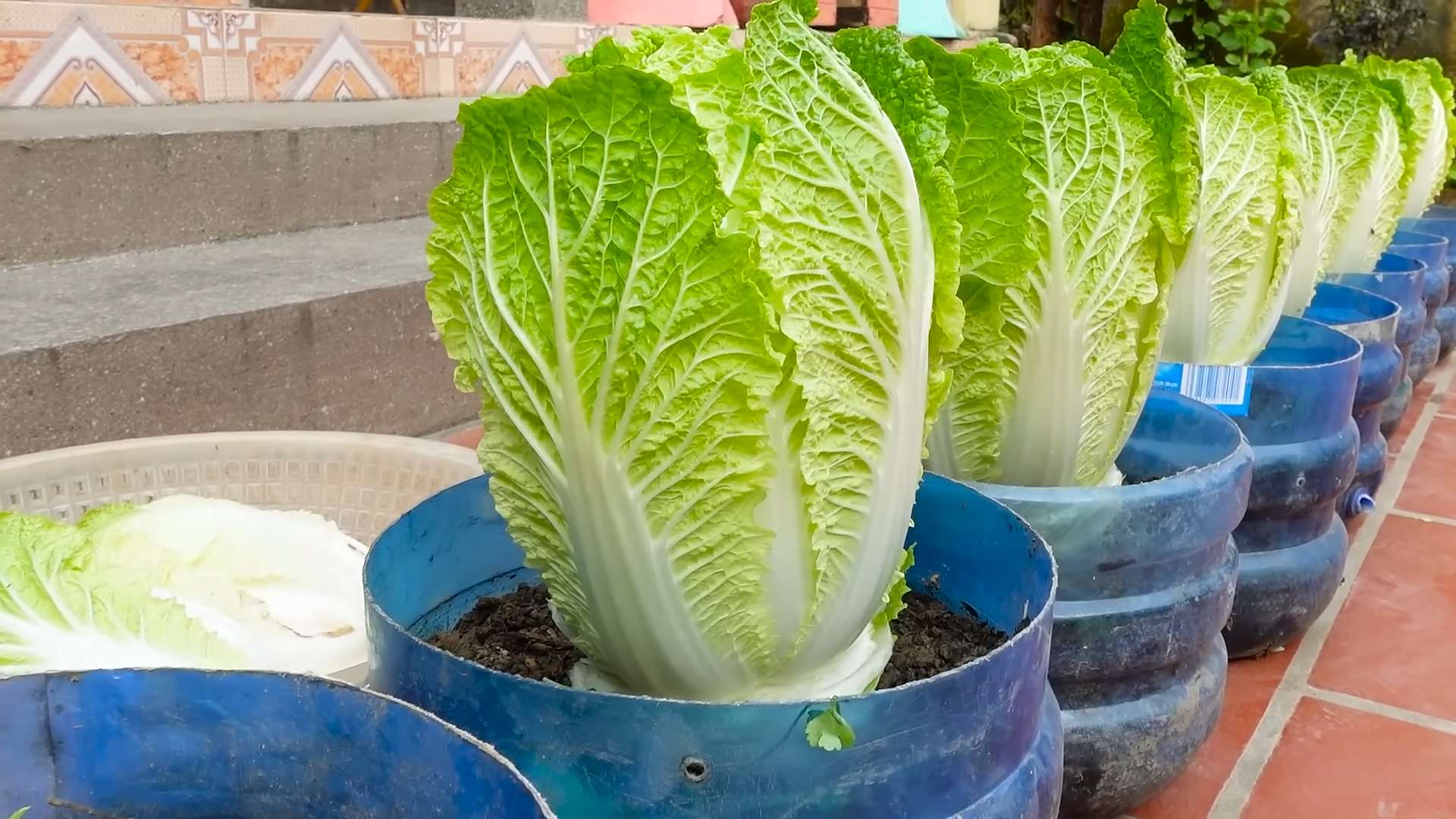
Grow Your Own Peanuts: A Beginner’s Guide
Hey there, fellow gardening enthusiasts! Ever thought about growing your own peanuts? It might sound a little crazy, especially if you don’t live in the Deep South, but trust me, it’s totally doable and incredibly rewarding. I’ve been growing peanuts in my backyard for a few years now, and I’m here to share everything I’ve learned so you can give it a try too. Get ready for some homegrown goodness!
Choosing the Right Peanuts and Location
Before we dive into the nitty-gritty, let’s talk about peanut varieties and finding the perfect spot in your garden.
* Peanut Varieties: There are four main types: Virginia, Spanish, Runner, and Valencia.
* Virginia: These have the largest kernels and are often sold as roasted peanuts in the shell. They need a longer growing season.
* Spanish: Smaller kernels with a reddish skin. They have a higher oil content and a nutty flavor. They mature relatively quickly.
* Runner: Mostly used for peanut butter. They have a uniform kernel size and good roasting characteristics.
* Valencia: Usually have three or more small kernels per shell. They’re sweet and often roasted in the shell.
* My Recommendation: For beginners, I suggest starting with Spanish or Valencia peanuts. They mature faster and are generally easier to grow.
* Location, Location, Location: Peanuts need at least 6-8 hours of direct sunlight per day. They also prefer well-drained, sandy loam soil.
* Soil Drainage is Key: Peanuts don’t like soggy feet! If your soil is heavy clay, amend it with plenty of compost and sand to improve drainage.
* Soil pH: Aim for a soil pH between 6.0 and 6.5. You can test your soil with a kit from your local garden center.
* Space Requirements: Give each plant about 6-8 inches of space in rows that are 2-3 feet apart. This allows for good air circulation and makes harvesting easier.
Getting Started: Planting Your Peanuts
Now for the fun part – planting! Here’s how to get your peanut plants off to a great start.
1. Prepare the Soil:
* Loosen the soil to a depth of at least 12 inches.
* Incorporate plenty of compost or well-rotted manure to enrich the soil. This will provide essential nutrients for your peanut plants.
* Remove any rocks, weeds, or debris from the planting area.
2. Choose Your Planting Method:
* From Raw Peanuts: You can plant raw, unsalted peanuts directly from the grocery store or a seed supplier. Make sure they are labeled for planting and haven’t been roasted.
* From Seedlings: You can also start peanuts from seedlings purchased at a nursery. This gives you a head start, especially if you have a short growing season.
3. Planting Raw Peanuts:
* Shelling (Optional): You can plant peanuts in their shells or shell them first. Shelling them can speed up germination, but it’s not essential. I usually shell mine just to get things moving a bit faster.
* Soaking (Optional): Soaking the peanuts in water for a few hours before planting can also help with germination. Don’t soak them for too long, though, or they might rot.
* Planting Depth: Plant the peanuts about 1-2 inches deep and 6-8 inches apart.
* Spacing: Space rows 2-3 feet apart.
* Watering: Water thoroughly after planting.
4. Planting Seedlings:
* Dig Holes: Dig holes that are slightly larger than the root ball of the seedlings.
* Gently Remove Seedlings: Carefully remove the seedlings from their containers.
* Planting Depth: Plant the seedlings at the same depth they were growing in their containers.
* Spacing: Space the seedlings 6-8 inches apart in rows that are 2-3 feet apart.
* Watering: Water thoroughly after planting.
5. Timing is Everything:
* Wait for Warm Weather: Peanuts are warm-weather crops. Wait until the soil temperature is consistently above 65°F (18°C) before planting. This is usually a couple of weeks after the last frost.
* Growing Season: Peanuts need a long growing season, typically 120-150 days.
Caring for Your Peanut Plants
Once your peanut plants are in the ground, it’s time to give them some TLC. Here’s what you need to do to keep them happy and healthy.
1. Watering:
* Regular Watering: Water your peanut plants regularly, especially during dry periods.
* Avoid Overwatering: Be careful not to overwater, as this can lead to root rot.
* Watering Technique: Water at the base of the plants to avoid wetting the foliage, which can encourage fungal diseases.
2. Weeding:
* Keep the Area Weed-Free: Weeds compete with peanut plants for nutrients and water. Keep the area around your plants weed-free by hand-pulling or using a hoe.
* Mulching: Mulching with straw or hay can help suppress weeds and retain moisture in the soil.
3. Fertilizing:
* Light Feeding: Peanuts don’t need a lot of fertilizer. A light feeding with a balanced fertilizer (e.g., 10-10-10) a few weeks after planting is usually sufficient.
* Avoid High Nitrogen: Avoid fertilizers that are high in nitrogen, as this can promote leafy growth at the expense of peanut production.
4. Hilling:
* The Importance of Hilling: This is a crucial step! As the peanut plants grow, they will produce “pegs” that grow down from the plant into the soil. These pegs are where the peanuts develop.
* How to Hill: About a month after the plants start flowering, gently mound soil around the base of the plants to encourage the pegs to enter the soil. Repeat this process every few weeks.
5. Pest and Disease Control:
* Common Pests: Aphids, spider mites, and leafhoppers can sometimes attack peanut plants.
* Natural Pest Control: Use insecticidal soap or neem oil to control these pests.
* Fungal Diseases: Fungal diseases like leaf spot can also be a problem.
* Preventative Measures: Ensure good air circulation around your plants and avoid overhead watering to prevent fungal diseases. You can also use a fungicide if necessary.
Harvesting Your Peanuts
The moment you’ve been waiting for! Harvesting your own peanuts is so satisfying. Here’s how to know when it’s time and how to do it right.
1. When to Harvest:
* Timing: Peanuts are usually ready to harvest about 120-150 days after planting, depending on the variety.
* Signs of Maturity: The leaves will start to turn yellow and the plants will begin to die back.
* Test Dig: Dig up a few plants and check the peanuts. The shells should be well-formed and the kernels should be plump and have a reddish-brown skin.
2. Harvesting Process:
* Loosen the Soil: Use a garden fork or shovel to loosen the soil around the plants.
* Pull Up the Plants: Gently pull up the entire plant, being careful not to break off the peanuts.
* Shake Off Excess Soil: Shake off any excess soil from the plants.
3. Curing Your Peanuts:
* Why Curing is Important: Curing is essential for developing the flavor and preventing mold growth.
* Hanging Method: Hang the plants upside down in a well-ventilated area for 2-4 weeks.
* Alternative Method: If you don’t have space to hang the plants, you can spread the peanuts out on a screen or tarp in a well-ventilated area.
* Check for Mold: Check the peanuts regularly for signs of mold. Discard any peanuts that show signs of mold.
4. Storing Your Peanuts:
* After Curing: Once the peanuts are cured, you can remove them from the plants.
* Storage Options: Store the peanuts in a cool, dry place in airtight containers.
* Free
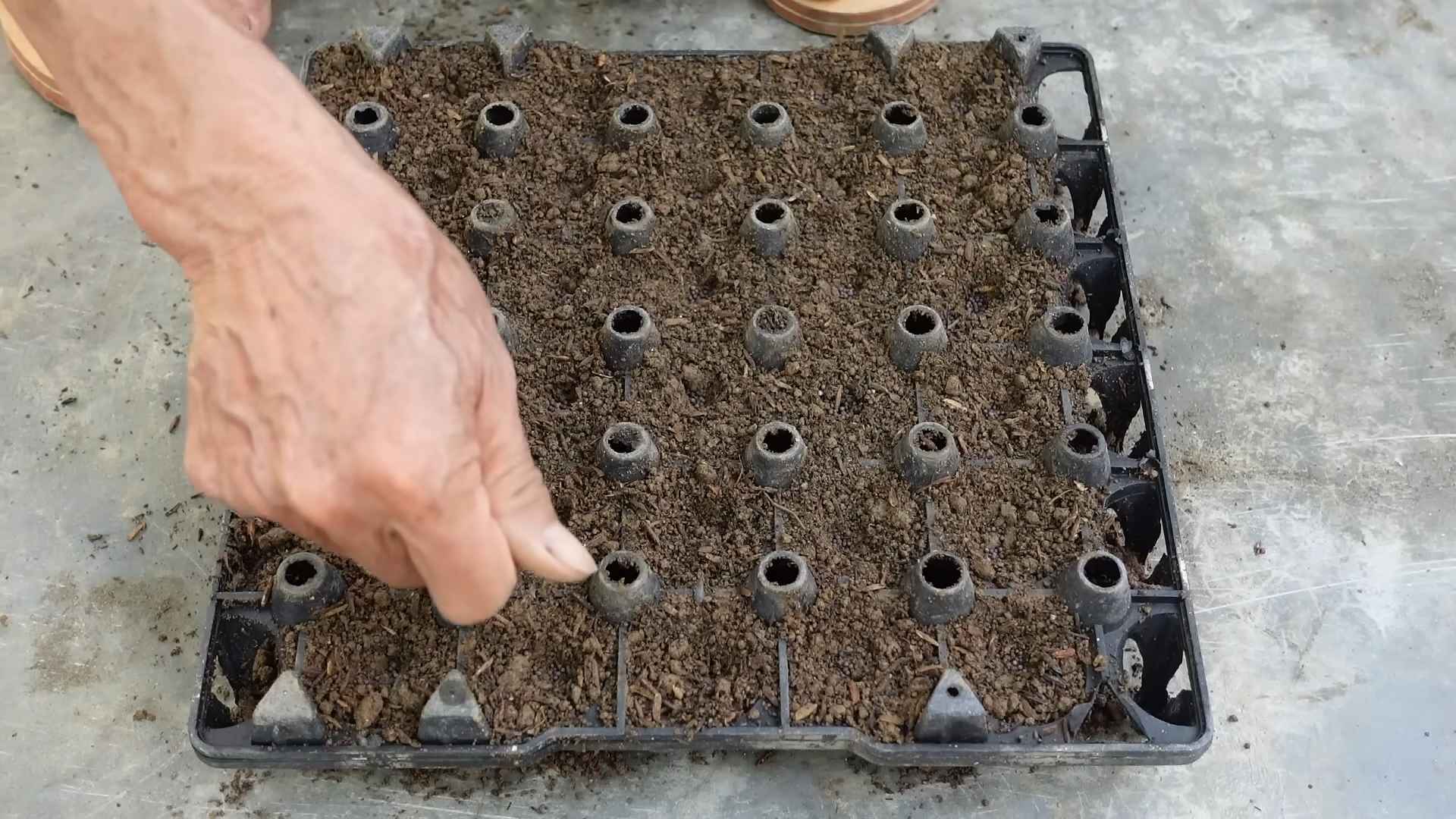
Conclusion
So, there you have it! Growing peanuts at home is not only achievable, but it’s also a deeply rewarding experience. Forget the store-bought varieties that often lack the freshness and unique flavor that homegrown peanuts offer. This DIY trick transforms your garden (or even a spacious container on your balcony) into a miniature peanut farm, providing you with a sustainable source of this delicious and nutritious legume.
Why is this a must-try? Because it connects you to your food in a way that simply buying it from the store never could. You witness the entire life cycle, from planting the raw peanuts to harvesting the mature pods, a process that’s both educational and incredibly satisfying. Plus, the taste of freshly harvested, homegrown peanuts is unparalleled. They’re sweeter, nuttier, and bursting with a flavor that’s simply unmatched.
But the benefits don’t stop there. Growing your own peanuts is also a fantastic way to reduce your carbon footprint. You’re eliminating the transportation and packaging associated with commercially grown peanuts, contributing to a more sustainable lifestyle. And let’s not forget the sheer joy of sharing your homegrown bounty with friends and family! Imagine the look on their faces when you present them with a bag of freshly roasted peanuts that you grew yourself.
Looking for variations? Absolutely! Consider experimenting with different varieties of peanuts. Virginia peanuts are known for their large size and are perfect for roasting. Spanish peanuts are smaller and have a reddish skin, making them ideal for candies and snacks. Valencia peanuts are characterized by their multiple peanuts per pod and are often boiled. Each variety offers a unique flavor profile, allowing you to tailor your peanut crop to your specific preferences.
Another variation involves the growing medium. While well-draining soil is essential, you can enrich it with compost or other organic matter to boost nutrient levels and improve drainage. You can also try growing peanuts in raised beds or containers, which can be particularly beneficial if you have poor soil quality or limited space. Just ensure the container is large enough to accommodate the peanut plants’ root system.
Furthermore, consider companion planting. Certain plants, such as marigolds and basil, can help deter pests and attract beneficial insects, creating a healthier environment for your peanut plants to thrive.
We wholeheartedly encourage you to try this DIY trick and experience the magic of growing peanuts at home. It’s a project that’s suitable for gardeners of all skill levels, from beginners to seasoned pros. The process is relatively simple, and the rewards are immense.
Don’t be afraid to experiment and adapt the techniques to suit your specific climate and growing conditions. Every garden is unique, and what works for one person may not work for another. The key is to observe your plants closely, learn from your mistakes, and most importantly, have fun!
Once you’ve harvested your first crop of homegrown peanuts, we’d love to hear about your experience. Share your photos, tips, and stories with us in the comments section below. Let’s create a community of peanut-growing enthusiasts and inspire others to embark on this rewarding journey. So, grab some raw peanuts, prepare your garden, and get ready to experience the joy of growing your own delicious and nutritious peanuts at home!
Frequently Asked Questions (FAQ)
What kind of climate is best for growing peanuts?
Peanuts thrive in warm climates with a growing season of at least 120 frost-free days. They need plenty of sunshine and consistent warmth to develop properly. Ideal temperatures range from 68°F to 86°F (20°C to 30°C). If you live in a cooler climate, you can start your peanut plants indoors and transplant them outdoors once the weather warms up. Using black plastic mulch can also help to warm the soil and extend the growing season.
How much space do peanut plants need?
Peanut plants typically need about 12 to 18 inches of space between each plant. This allows them to spread out and develop their root system without overcrowding. If you’re growing peanuts in rows, space the rows about 2 to 3 feet apart. Container gardening is also an option, but make sure to use a large container (at least 18 inches in diameter) for each plant.
What type of soil is best for growing peanuts?
Peanuts prefer well-draining, sandy loam soil with a slightly acidic pH (around 6.0 to 6.5). Heavy clay soil can hinder the development of the peanut pods. Amend the soil with compost or other organic matter to improve drainage and fertility. Avoid soils that are excessively rocky or compacted.
How often should I water my peanut plants?
Peanut plants need consistent moisture, especially during flowering and pod development. Water deeply and regularly, ensuring the soil remains moist but not waterlogged. Avoid overhead watering, as this can promote fungal diseases. A soaker hose or drip irrigation system is ideal for delivering water directly to the roots. Reduce watering as the plants approach maturity.
When is the best time to harvest peanuts?
Peanuts are typically ready to harvest in the fall, about 120 to 150 days after planting. The leaves will start to turn yellow and the pods will feel plump and mature. To test for ripeness, dig up a few plants and check the pods. The inside of the pods should be dark and the peanuts should be fully formed.
How do I harvest peanuts?
To harvest peanuts, carefully dig up the entire plant, being careful not to damage the pods. Shake off any excess soil and allow the plants to dry in the sun for a few days. This will help to cure the peanuts and improve their flavor.
How do I cure and store peanuts?
After drying the plants in the sun, remove the peanuts from the vines. Spread them out in a single layer on a screen or tray and allow them to air dry for another week or two. Store the dried peanuts in a cool, dry place in an airtight container. Properly cured and stored peanuts can last for several months.
Can I grow peanuts indoors?
While it’s possible to grow peanuts indoors, it can be challenging. Peanut plants need a lot of sunlight and warmth, which can be difficult to provide indoors. If you want to try growing peanuts indoors, use a large container, provide plenty of light (either natural or artificial), and maintain a warm temperature.
What are some common pests and diseases that affect peanut plants?
Common pests that affect peanut plants include aphids, spider mites, and leafhoppers. Diseases include leaf spot, stem rot, and peanut rust. Monitor your plants regularly and take action to control pests and diseases as soon as they appear. Organic pest control methods, such as insecticidal soap and neem oil, can be effective.
Can I eat the peanut leaves?
Yes, peanut leaves are edible and can be used in salads or cooked like spinach. They are a good source of protein and fiber. However, it’s best to harvest the leaves when they are young and tender.
How do I roast my homegrown peanuts?
To roast your homegrown peanuts, preheat your oven to 350°F (175°C). Spread the peanuts in a single layer on a baking sheet and roast for 20 to 25 minutes, or until they are golden brown and fragrant. Stir the peanuts occasionally to ensure even roasting. Allow the peanuts to cool completely before storing them. You can also boil peanuts for a different flavor profile.
What are the benefits of growing my own peanuts?
Growing your own peanuts offers numerous benefits, including:
* Fresh, flavorful peanuts
* A sustainable source of food
* Reduced carbon footprint
* A rewarding gardening experience
* The opportunity to share your homegrown bounty with others
* Knowing exactly what went into growing your food, avoiding pesticides and unwanted chemicals.
Is growing peanuts at home difficult?
No, growing peanuts at home is not difficult, especially if you follow the guidelines provided. It requires some patience and attention, but the rewards are well worth the effort. Even beginner gardeners can successfully grow peanuts with a little bit of planning and care.

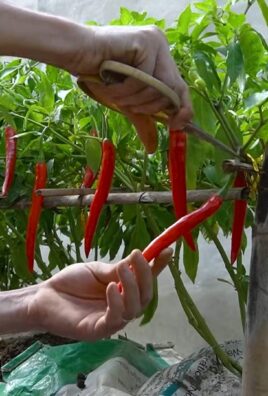
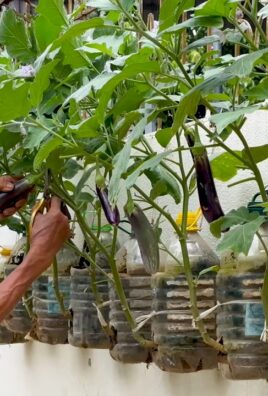
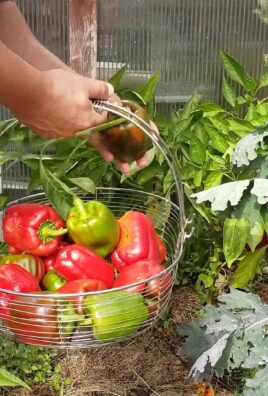
Leave a Comment